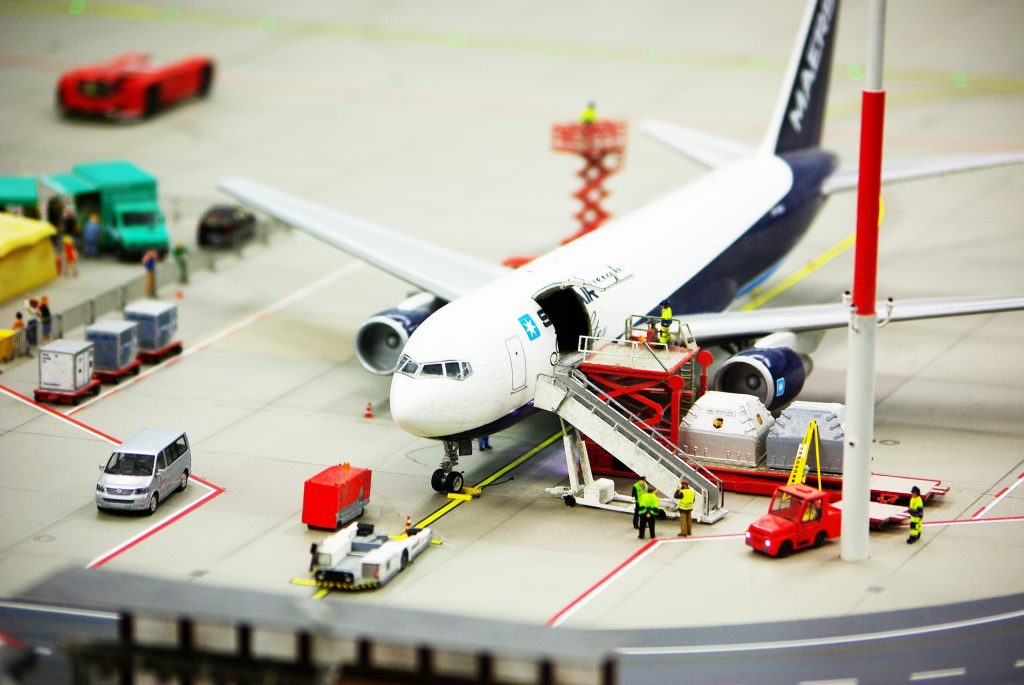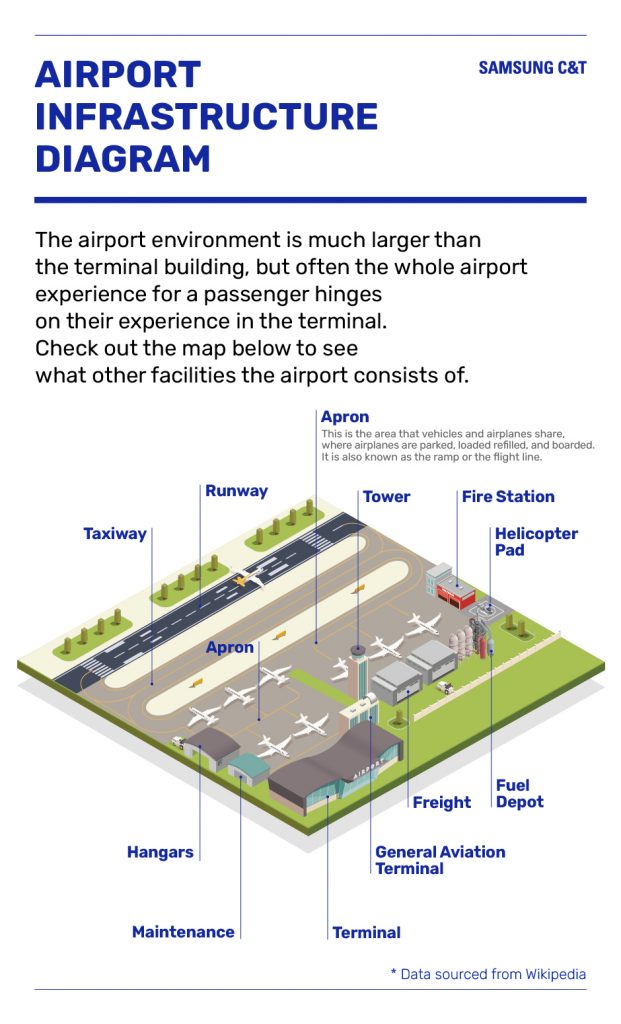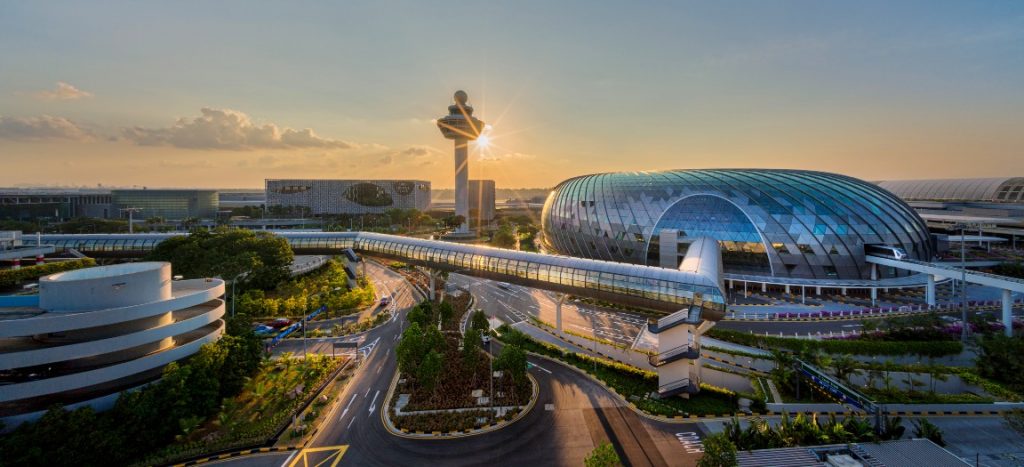What comes to mind when you think of an airport? Is it the excitement and joy of travel? Airports as hubs for movement of travelers and goods between countries have become essential spaces in the modern world.
Now that the COVID-19 pandemic has subsided, international airports are bustling places once again, so it is a good time to learn about the history and essential facilities of airports.

Round-the-world trips
It did not take long after the Wright brothers made their first powered flight in December 1903 for the first airport to appear. The world’s oldest airport – still operating after 114 years – is at College Park in Maryland, the United States. Wilbur Wright landed there in 1909 to train U.S. Army officers.
Currently the world’s largest airport is King Fahd International Airport. Occupying 776 square kilometers, it is located northeast of Saudi Arabia’s capital city of Riyadh. Amazingly, that city is planning to build an even bigger airport in the next few years.
In terms of busiest airports, according to the Airports Council International, Hartsfield-Jackson in Atlanta sees 75.7 million passengers each year. It is also ranks first in terms of aircraft movements. In fact, 8 of the 10 world’s busiest airports are located in the United States. Hong Kong’s is the top airport in terms of cargo and international freight.
Each year Airport Service Quality Awards recognizes airports for things like cleanliness, speed of check-in, ease of navigation, and enjoyability. There are many categories and no overall winner, but some airports are recognized for their unique strengths. For instance, Singapore’s Changi Airport earned high marks for its dedicated staff and its ease of navigation in these awards. Also, the staff and cleanliness of Rome’s Aeroporto di Roma-Fiumicino earned honors as well.
Many parts make an airport run
While early airports were barely more than a grass runway, a hanger to store planes and a shed to protect waiting passengers and their luggage from weather, modern-day airports are highly complex operations with many moving parts that require specialist construction and maintenance. Whereas the first airports could be run by a handful of people, they now require tens of thousands to keep everything running like clockwork. As one example, Korea’s Incheon International Airport has 70,000 workers.
The facilities that make up an airport can be broadly divided into two types: those needed for the airplanes and those needed for the people and cargo that are transported.
The essential facilities that an airport must have for the airplanes are an air traffic control tower; runway and taxiway; hangers for aircraft maintenance repairs and inspections; lighting, signage, and markings to guide the pilot to and from the terminal; a weather monitoring station; fuel storage and pumps; firefighting facilities; and an apron, where the planes are parked, loaded, and unloaded.
The facilities necessary for the people and cargo, including the passengers, ground staff, and flight crew of the airlines, are mostly housed in the terminal building. They include jet bridges that link airplanes to the terminal; first aid facilities; arrival and departure facilities such as check-in desks, baggage claim areas; cargo processing areas; customs, immigration and quarantine facilities; and security facilities.
Of course, these are just the bare minimum, and most airports now also have additional facilities such as restaurants, banks, money change counters, car parking, lounges and hotels, rest and preparation areas for airport staff, and linkages to local public transport services.
An infographic that briefly shows the major facilities required at most airports can be seen below.

Airport construction business of Samsung C&T E&C Group
Samsung C&T’s Engineering and Construction Group has abundant experience working on airports around the world. For instance, the passenger terminal and concourse at Taiwan Taoyuan International Airport’s Terminal 3 are currently under construction.
Also underway is the project to expand Bangladesh’s Dhaka International Airport. A third terminal is being built. The group is in charge of paving the runway and taxiway and building the terminal and baggage handling system.
In addition, Samsung C&T E&C Group’s project to construct the new Ulaanbaatar International Airport in Mongolia included the building of runways, passenger terminals, control towers and 32 buildings and infrastructure facilities that support airport operations.
Furthermore, the group contributed to the construction of airports around the world by successfully completing the Incheon International Airport Terminal 1 and concourses expansion project, the Hong Kong Chek Lap Kok International Airport ground improvement project, and the Singapore Changi International Airport runway expansion project.
With all this past and present experience, Samsung C&T Engineering & Construction Group will continue to strive to lead the construction of modern airports through its accumulated expertise.










